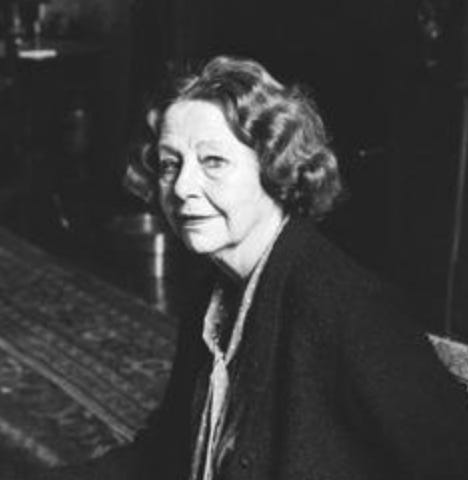TWA from Thursday, July 27, 2017
“Brothers at the Reunion” by Athena Kildegaard from Bodies of Light. © Red Dragonfly Press, 2011.
ORIGINAL TEXT AND AUDIO - 2017
It was on this day in 1789 that the United States Department of Foreign Affairs was created. A couple of months later, President Washington decided that he needed someone to help with "home affairs," but didn't think there was enough work to create a new position. So he combined them into one, and the Department of Foreign Affairs was renamed the Department of State in September of 1789. Foreign affairs remained the focus of the State Department, and is still the focus today.
American diplomacy had begun long before the official position of secretary of state. The key players in the Revolution knew that in order to succeed, they needed the help of Britain's enemies: France and Spain. In 1775, the Continental Congress established the "Committee of Secret Correspondence," led by Benjamin Franklin, to negotiate with potential European allies and sympathetic British supporters.
After American independence and the adoption of the Constitution, President Washington appointed Thomas Jefferson as the first secretary of state. Jefferson disliked the formality and elaborate social codes of European courts, which symbolized everything that America had rejected when it broke from England. Jefferson encouraged his diplomats to follow the example set by Benjamin Franklin: wearing simple clothing and using simple manners.
Unfortunately, the Department of State was underfunded, and diplomats earned such small salaries that only wealthy people could afford the job. In 1790, the entire budget for the Department was $56,000; that included the salaries of Jefferson, all the diplomats, administrative staff, firewood, and stationery.
Jefferson wrote: "Commerce with all nations, alliance with none, should be our motto."
It's the birthday of writer and critic Elizabeth Hardwick, born in Lexington, Kentucky (1916). She moved to New York to study at Columbia. In 1946, she met the poet Robert Lowell at a party. He was in the middle of an ugly divorce from his first wife, the writer Jean Stafford, but Hardwick and Lowell reconnected at a writers retreat and married in 1949. During their honeymoon, Lowell had a manic depressive attack, and throughout their marriage, he had frequent affairs and breakdowns. She said: "I didn't know what I was getting into, but even if I had, I still would have married him. He was not crazy all the time — most of the time he was wonderful."
In 1959, an editor at Harper's named Robert Silvers put together an issue about the state of literature in America, and he asked Hardwick to write a piece. Her essay, "The Decline of Book Reviewing," sparked a huge controversy — even the owner of Harpers wrote a letter condemning it. She wrote: "In America, now ... a genius may indeed go to his grave unread, but he will hardly have gone to it unpraised. Sweet, bland commendations fall everywhere upon the scene; a universal, if somewhat lobotomized, accommodation reigns. A book is born into a puddle of treacle; the brine of hostile criticism is only a memory. Everyone is found to have 'filled a need,' and is to be 'thanked' for something and be excused for 'minor faults in an otherwise excellent work.'"
In early 1963, Hardwick and Lowell were having dinner with Jason and Barbara Epstein, their friends and neighbors on West 67th Street. The New York Times was on strike, and Jason Epstein joked that life was nice and easy now that they had nothing to do, with no New York Times Book Review to read. They talked about starting their own book review, and realized that it actually was the perfect time to do it, since publishers were getting desperate without the Times. The next morning, Lowell went to the bank and took out a $4,000 loan secured by his trust fund. They called Robert Silvers, the editor at Harper's, and asked if he would be interested in working as an editor for their not-yet-existent publication; he accepted immediately. They put together the first issue of The New York Review of Books at the dining room table in Hardwick and Lowell's apartment. It was published in February of 1963, featuring work by Norman Mailer, William Styron, and Mary McCarthy. They printed 100,000 copies, which sold out right away. Hardwick was not an official editor — that role went to Barbara Epstein and Robert Silvers — but she was an editorial advisor. She helped shape the overall content and image of the review; Jason Epstein described Hardwick as "a presiding sensibility whom everyone wished to satisfy."
Hardwick's books of fiction and essays collections include Sleepless Nights (1979), Bartleby in Manhattan and Other Essays (1983), and Sight Readings: American Fiction(1998).
She said, "There are really only two reasons to write: desperation or revenge."
Be well, do good work, and keep in touch.®
If you like these newsletters, you can support this effort by:
*Clicking the Subscribe button (though this is free, you can make a paid contribution)
Stop by our Store and select what works for you - CLICK HERE
Send a check to: Prairie Home Productions, P.O. Box 2090, Minneapolis, MN 55402




